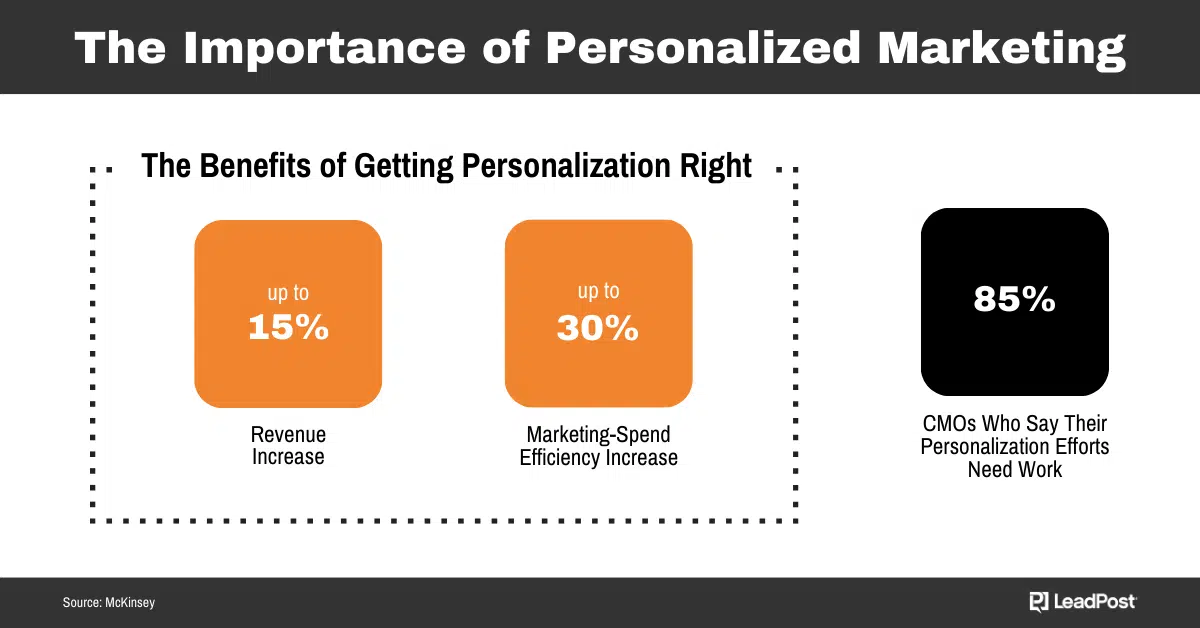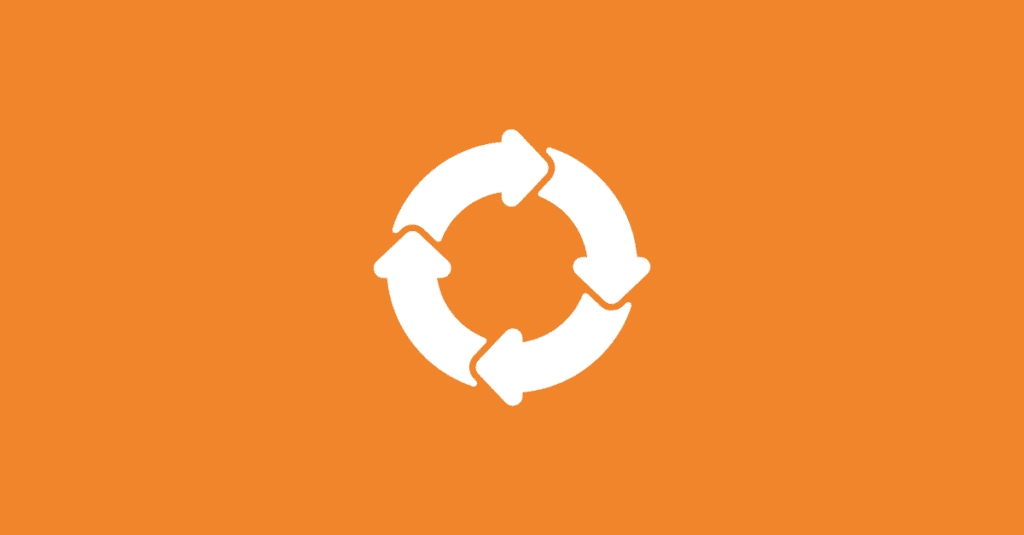Marketing personalization is a critical element for driving business growth. A McKinsey study found that personalization leads to 5 to 15% increases in revenue. And businesses that get it right see 10 to 30% increases in marketing-spend efficiency. But only 15 percent of CMOs believe their company is on the right track with personalization. Lifecycle marketing can help with that.
Roy Harmon talked to lifecycle marketing consultant Sascha Hoffmann to discuss this strategy.

What is Lifecycle Marketing?
Lifecycle marketing, according to Sascha, is not a novel concept.
“It’s just an updated term for a fundamental marketing concept,” he says.
It’s a holistic approach that takes the entire customer journey into account. This ensures a consistent strategy across all customer interactions with a company.
Lifecycle marketing is similar to inbound marketing. At its core, it focuses on:
- attracting people to your brand,
- capturing their interest,
- nurturing them to become customers, and
- working to increase their lifetime value to your company.
It’s not just about selling a product or service. It’s about understanding your customer’s journey. That way you can meet them at each stage with appropriate and engaging content. The long-term goal is to grow your business by improving each stage of the customer’s journey.
Why is Lifecycle Marketing Important?
Lifecycle marketing provides a strong foundation for businesses aiming to develop deeper and more profitable relationships with their customers.
Here’s why.
Improved Personalization
As we covered at the beginning of this article, marketing personalization is essential. Companies bombard consumers with marketing messages daily. You can deliver more relevant, personalized communications with lifecycle marketing. This messaging will better resonate with your audience’s specific needs and wants.

Optimized Customer Experience
Lifecycle marketing helps businesses deliver a seamless and integrated customer experience. You can ensure that each touchpoint offers value and furthers the relationship.
Increased Customer Loyalty
You can build customer loyalty and encourage repeat business by nurturing the customer relationship post-purchase. Loyal customers are more likely to purchase again. They also act as brand ambassadors which will lead to more new customers.
Better Resource Allocation
Understanding the customer journey leads to more efficient resource allocation. You can invest in strategies that work for each stage. You can also refine your approach based on actual customer behaviors and responses.
The Five Stages of Lifecycle Marketing
Sascha emphasizes the importance of understanding the five stages of lifecycle marketing. These stages include:
- Unaware. At this stage, the customer does not know they have a problem that needs solving.
- Problem-Aware. Customers in this stage realize they have a problem, but don’t know the solutions.
- Solution-Aware. In this stage, the customer is aware of the solutions but don’t know which one is the best.
- Product-Aware. The customer is in the Product-Aware stage when they know about your product but are unsure if it’s the right fit.
- Most-Aware. Customers who believe your product is the right solution are in this stage.
These stages help marketers understand their audience’s needs and tailor their approach accordingly. Sascha points out that sometimes you might need to break some of these stages down even further. You’ll make this decision based on the specific pain points of your audience.
You might wonder how granular this process can get. For Sascha, the answer depends on the business. For example, some B2B businesses might need a detailed approach with many stages. But, in general, Sascha prefers the more simplified model detailed above.
Implementing Lifecycle Marketing
Successful lifecycle marketing begins with a well-structured implementation plan. You need to have a clear vision of your customer’s journey and their interactions with your brand.
Here are some steps to get you started:
- Define Your Customer Lifecycle. Map out the stages of your customer journey. Be sure to include all touchpoints a customer may have with your brand. This will help you understand where and how to engage customers.
- Understand Your Customer Segments. Not all customers are the same. They have different needs, preferences, and behaviors. Understand who your customers are and segment them accordingly. Then, tailor your marketing strategies to meet their specific needs.
- Use Marketing Automation. Automation tools can help you manage and execute your lifecycle marketing strategies. These can include email marketing software, a CRM, and data analysis tools. These tools will allow you to deliver lifecycle marketing campaigns at scale and track the effectiveness of your efforts.
- Test, Measure, and Adjust. Lifecycle marketing is an ongoing process. Regularly review your data and get customer feedback to evaluate your efforts and adjust as necessary.
Other Lifecycle Marketing Tips
Here are some other insights Sascha shared with us.
Don’t Neglect the Unaware Stage
The Unaware stage often goes overlooked. This is a mistake, especially when dealing with a new market or creating a new category.
At this stage, more general content is necessary to identify potential customers and start building a target audience.
“Sometimes you have to go for generic stuff,” Sascha says, “even though it might not generate you any business in the short term.”
He highlights the importance of SEO in the Unaware stage. Focusing on gaining some SEO wins can help a company gain traction. It may not generate immediate business. But it’s a stepping stone to higher-value keywords.
How to Prioritize Your Marketing Efforts
When starting with lifecycle marketing, determining what stages to prioritize can be challenging. Sascha suggests looking for quick wins and addressing the biggest pain points first.
For instance, say your company generates many leads but a low close rate. Focusing on a good email campaign to nurture these leads might be a good first step.
Sascha also emphasizes the need to see the funnel as a whole. Changes at one stage can affect the others. Making careful adjustments at each stage is crucial.
How to Choose the Right Channels for Each Stage
How do you choose what marketing channels to focus on? Sascha advises businesses to analyze their current approach. See what’s already working and try to do more of that.
Analyzing where the most potential lies is key to deciding which channels to use.
For the lower stages of the funnel, Sascha recommends starting with Google Ads.
“Usually, when someone searches for a buyer intent keyword, they’ve got their credit card ready,” he says.
For the higher stages, LinkedIn campaigns, content marketing, or partnerships can be beneficial.
About Sascha
Sascha’s journey in marketing began eight years ago. His path has taken him from Germany to the U.S., with a detour to London, and then back to the States. For the past three years, Sascha has run his own consultancy. He helps clients generate demand, capture leads, guide them through their buying stages, and ultimately grow their businesses.
Connect with Sascha
- Blog: Back 2 Marketing School
- Consulting. Scuba Marketing
